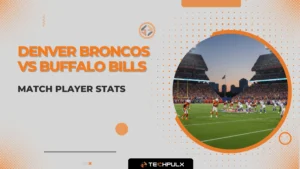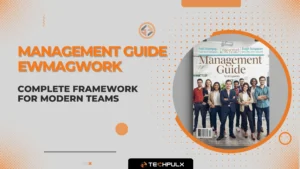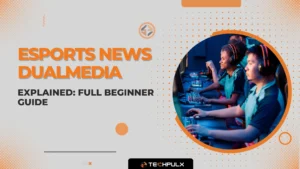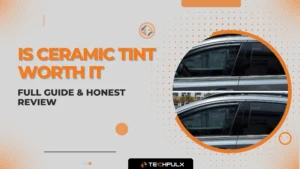In today’s world, where the use of images to communicate is preferred over text, where art, marketing, and storytelling are linked to images, producing powerful images at will is a necessity, not a luxury. Whether you are a designer, entrepreneur, content creator, or hobbyist, it is important to convey your vision without restriction. This is why the option of an unrestricted image generator (from AI) provides the complete freedom to be creative.
Artificial intelligence is already changing the way we work, think and create. From text generation to voice cloning, AI tools have changed almost every industry. But producing incredible, original visual imagery from a simple prompt may be one of the most amazing possibilities.
What Is an AI Image Generator?
An AI image generator is a type of software application that uses machine learning to create images from user-provided input. Most of these applications use a variety of deep learning methods called generative adversarial networks or transformer-based models, which are trained on extremely large datasets of art, photos, and illustrations.
The user provides a prompt, usually in the form of a short description, phrase, or concept, and the AI translates the input into a visual representation. This technology lets anyone create images and art even without graphic design or art skills.
What makes unrestricted AI image generators different than other platforms is the lack of near-complete restrictions. All of these platforms are specifically designed to allow for complete artistic freedom with almost no censorship, fewer style restrictions, and the ability to generate in multiple genres, moods, and subjects.
What Does Total Creative Freedom Mean?
In the context of AI image generation, creative freedom refers to the ability to explore, experiment, and produce images that meet your definition of what you would like to create without constraints from templates, permissions, or your technical abilities.
Elements of Total Creative Freedom Include:
- No restrictions on subject matter or themes
- Access to many styles, formats, and art forms
- Creative iterations that will go on until you achieve your perfectly positioned result
- Ownership and usage rights that favor the creator
And this change allows artists, marketers, storytellers, and brands to make art, new content, and break away from the sameness of stock photos.
The Evolution of AI Image Generators

The evolution of AI-generated art is pretty incredible. Just a few years ago, AI-generated images were either abstract, oddly distorted, or didn’t even have a focus. Now, with better training data, better algorithms, and more computing power, AI can generate photorealistic scenes, fantasy landscapes, comic book characters, and so forth.
Part of what aided this progression in technology is the advent of AI-powered design tools that integrate AI technology, but also bridge the gap between imagination and execution. With these tools, AI understands the language prompt better in context, emotional tone, and artistic direction.
Benefits of Using an Unrestricted AI Image Generator
Here are the main benefits of AI image generation when you have full creative control:
1. Speed and Efficiency
You are able to create high-quality images in seconds, which allows content creators, ad agencies, eCommerce sellers, and game developers to work faster.
2. Cost Savings
You will not have to hire designers for every graphic or illustration. It is cost-efficient for small businesses and startups that need a regular amount of content.
3. Accessibility
Not everyone has artistic ability to draw or design, but turning your ideas into an image can be as simple as describing the image you want. AI technology is creative, and it democratizes creativity for everyone.
4. Scalability
You can create multiple versions of AI-generated images for social media, marketing campaigns, product mock-ups, or branding collateral, without having to reinvent the wheel.
5. Original Visual Identity
AI allows you not only to avoid cliché stock photos but also to generate every image based on your request. This ensures you are original and will help move your visual storytelling forward.
Real World Applications of AI Image Generation

The effects of AI image generation are already being felt across industries. Here are five of the most emerging use cases:
1. Marketing and Advertising
Brands can create bespoke campaign graphics unique to the audience, mood, or product line. Marketers have creative superpowers, whether it’s surreal backdrops or conceptual visuals.
2. Publishing and Media
Writers, bloggers, and journalists are able to accompany their text and stories with illustrations that are cohesive, unique, and topical.
3. Game and Animation
AI generation can streamline character design, world-building, and asset development, which can save hundreds of hours in development time.
4. Education and Training
In an educational setting or in training environments, instructors can utilize AI to generate images, create informational graphics, and even create fictional scenarios to illustrate a specific learning objective.
5. Fashion and Product
Development Designers can use AI to experiment with color palettes, textile patterns, and even product packaging before committing to the workshop or prototype stage.
Limitless Digital Art Creation at Your Fingertips
One of the most exciting parts of AI art is that you can make infinite digital art. The only limits to what you can create are your imagination! Want to create a futuristic city with bright glowing waterfalls under a neon sky? Done. Need a fantastical creature that has never existed? No problem.
AI generators can emulate the painting styles of famous artists or blend different styles to create new ones. You can create historical scenes or render dream states or conjure a futuristic vision in moments. The possibilities are endless.
How to Choose the Right AI Image Generator

Different AI generators will have a range of capabilities, and not all will offer the same flexibility. Here are some factors when choosing your platform:
1. Creative Control
Find platforms that enable you to refashion your prompt, select from a range of styles,s and create multiple outputs.
2. Quality of Outputs
Look at examples of the tool’s outputs. Is the imagery realistic, clean, and well-composed?
3. Licensing Terms/Ownership
Make sure you have consent to use the images for commercial use, and customize the images as you would like.
4. User Interface
The simpler and unobtrusive the design, the better it will be for you to concentrate on your creative process!
5. Speed and Rendering Time
The faster the rendering time, the quicker you will be able to explore ideas and complete your iterative process and protocols.
The Role of Custom AI-Generated Visuals in Branding
Branded visuals are an important part of a brand’s identity. Stock images and templates can allow your content to fall by the wayside. Generative AI now provides a brand with the opportunity to create branded AI visuals that can stay consistent through the brand’s tone, values, and messaging.
These visuals are there to make your business stand out in a crowded digital landscape and to move as your brand moves. This creates a seamless look across channels and platforms. Whether it is creating hero images for your website, writing newsletters, or creating original brand images for social, AI provides brands with an innovative approach to visual storytelling.
Ethical Considerations and Limitations
AI image generation is highly powerful, but the downside is the unethical implications. These are only a few considerations:
Misuse: Poor or unethical use (using AI to create harmful or misleading content) requires responsible use.
Attribution: Although many models were trained on data similar to copyright laws will violate original requirements.
Bias: Bias in training data is reflected in the outputs. Use models that adequately definitions of ethical data collection and transparency.
Be a conscientious user and try to build ethical use for all people!
The Future of AI Image Generation
The field of AI image generation is changing quickly. As more clever models start to emerge, we will see many improvements in the future, such as visuals with even more realism, better comprehension of prompts, and presumably even video generation in real time.
We will likely see AI apps combined into actual creative applications such as Photoshop or Canva, creating a blend of human creativity and AI.
We may also begin to see voice-based prompts, gesture based commands, and augmented reality prompts affect the way we generate visuals. The possibilities for the future are infinite and exciting.
FAQs
Q1: Can AI images be used commercially?
Yes, most AI platforms provide you with a license for commercial use, so always check the terms before downloading and publishing photos/images.
Q2: Do I need design skills to use an AI image generator?
No. They are designed to be simple and intuitive. All you need to do is type in a prompt and the AI does the rest!
Q3: Are all AI visuals unique?
Yes. Images are generated based on your prompt and are usually generated as a one-off visual that is not a template.
Q4: Can I edit images after I have generated them?
Most platforms allow you to download the images and then edit them afterward, using design programmes such as Photoshop or GIMP.
Q5: Is there a cost for AI image generators?
All platforms will allow you a free trial, or only a limited number of generations. If you want unlimited use or a commercial license, the platform generally has a subscription or pay-as-you-go option.
Final Thoughts
The availability of unrestricted AI image generator options for complete creative freedom is not just a technological trend, it is a revolution in how we create, share, and interact with visual content. Anyone can access their creativity and create original and beautiful artwork in just a few minutes, given that they have the right platform to work with.
When you add the creative element of AI-powered design tools, you can create limitless digital art and ultimately design custom AI-generated visuals; you are not just keeping up with the future of content – you are creating it.
Whether you are an artist, a business owner, a content strategist, or a consumer, now is a fun time to explore the new content creation landscape. There are tools. There are only the limitations of your imagination.




